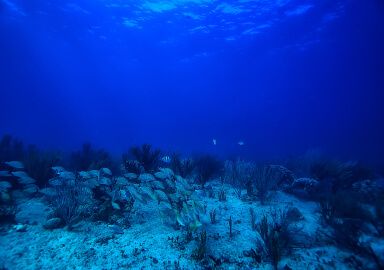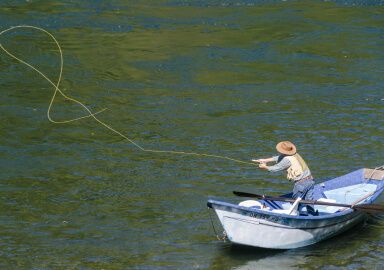Spot
Spot are a small, coastal marine fish important in commercial and recreational fishing along the Atlantic Coast of the USA and around the Gulf of Mexico.
View 1 listing
1
listings
–
price starting from
1
countries
–
to the nearest trip
About Spot
The spot, or Norfolk or Virginia spot, called Leiostomus xanthusus by the scientists, is a popular recreational angling species. This species is deep-bodied with a humped back and a depressed body. The small mouth has many small sharp teeth on the upper jaw and no teeth on the lower one. In colour, the species is silver or grey above and lighter below. The juveniles can be yellow, almost golden. All fish have a characteristic dark spot behind the middle of the gill.
The spot can grow to 36 cm. (14 in.) but are commonly caught around 25 cm. (10 in.). The greatest mass reported is 450 g. (1 lb.). The fish is short-lived with a reported lifespan of 4 years. Sexes are alike and the species is described as “demersal”, spending most of its time close to the bottom and feeding on “benthic invertebrates” - mostly crabs, worms, clams and shrimps. Spot also eat some plant material and detritus. There is a pronounced lateral annual movement to deeper waters in winter.
How to Catch?
Many, possibly most, recreational anglers along the Atlantic coast became “hooked” on fishing through catching spot. They are an excellent “beginner” species and yet remain a favourite with anglers due to their numbers, taste and ease of capture. Most angling families will have favourite photos somewhere of young family members proudly and happily posing with a newly-caught spot.
Spot feed mainly on the bottom and have a reputation of a fish that never really stops eating. Natural baits, similar to their chosen foods, are best, with bloodworm, crab and shrimp being popular. Deeper water fishing, with the lure or bait almost bouncing on the bottom, is effective in winter. This species is normally close to shore and not easily “spooked” by anglers and so casting great distances is often unnecessary.
Simple, light “bass-type” spinning equipment is best, using light braid and various two-hook rigs. Natural baits work and so do a variety of soft and hard lures with vertical jigging being popular in some areas. Shore fishing is best from piers and estuary banks, but most fishing is carried out from small day-trip or private boats.


